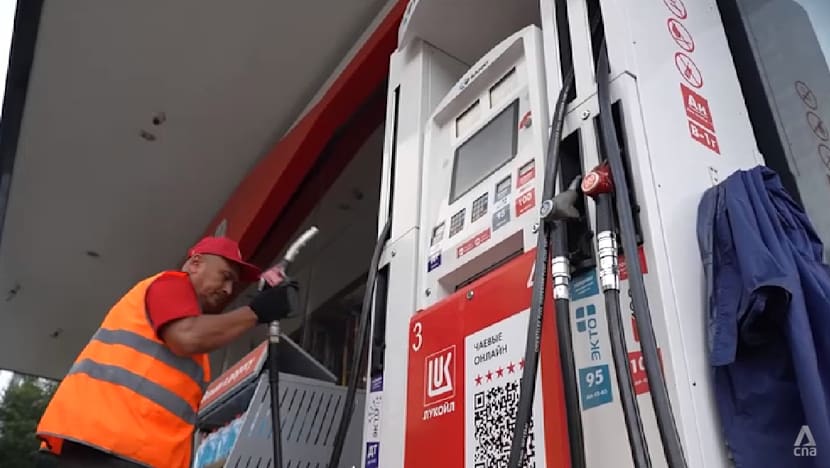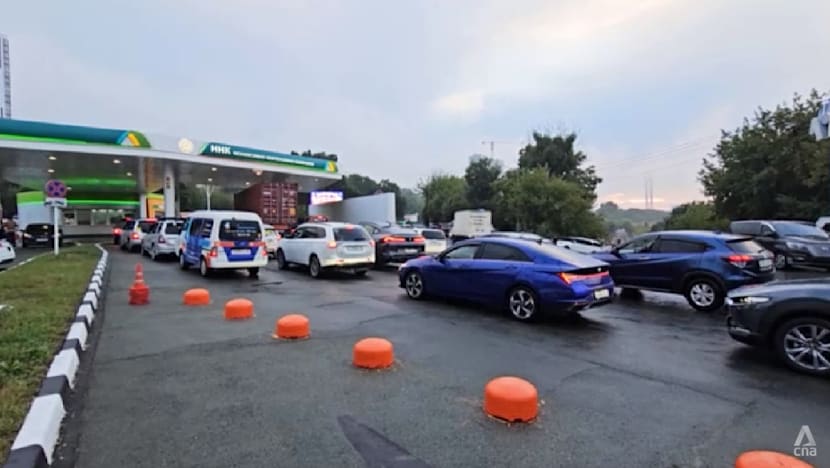Ukraine strikes on Russian oil pipelines spark fuel shortages, drive up pump prices
Since January, petrol costs at gasoline stations across Russia have climbed by about 7 per cent with little sign of easing anytime soon.

Ukraine’s strikes on Russia’s oil refineries and pipelines are aimed at choking off a key source of Kremlin revenue from energy exports. But the campaign is also hitting ordinary Russian motorists, driving up prices with little sign of easing anytime soon.

This audio is generated by an AI tool.
MOSCOW: Ukraine’s strikes on Russia’s oil refineries and pipelines are aimed at choking off a key source of Kremlin revenue from energy exports.
But the campaign is also hitting ordinary Russian motorists, driving up prices by about 7 per cent with little sign of easing anytime soon.
In recent weeks, long queues and persistent fuel shortages have been reported in more than a dozen regions of the oil-rich country.
In some areas, authorities have stepped in to restrict petrol sales to non-commercial vehicles and regulate distribution through a voucher system.
The government has also imposed a temporary ban on gasoline exports from August to October.
LONG QUEUES, HIGH PRICES
For ordinary motorists, even when fuel is available, the cost has become increasingly hard to bear.
In Moscow, drivers say they are feeling the squeeze.
For instance, the AI-95 fuel, Russia’s standard grade of unleaded gasoline, now costs nearly 65 Russian roubles (US$0.78) per litre, up from about 61 roubles per litre.
“The difference is huge. I work in delivery, so I use the car all the time,” said one driver.
“I used to spend 1,000 roubles, and now it is 1,500. That’s an extra 500 roubles gone.”
Experts told CNA that the peak holiday demand and harvest seasons are key reasons for the increase.
Supplies have tightened after Ukrainian attacks damaged refineries and forced major facilities offline.
Igor Yushkov, a professor at the Financial University under the Russian government, said another factor is the fuel damper subsidy - a tax benefit that compensates oil companies for selling petrol domestically at prices below export levels.
But with global oil prices falling over the past year and the rouble strengthening against the dollar, the gap between domestic and export prices has narrowed.
“In the first eight months of this year, the state has reduced damper payments to oil companies by about 46 per cent and this is significant for them,” said Yushkov.
“They have tried to compensate for the loss by provoking an increase in prices at least in the domestic market, so that they can earn this money here.”

ECONOMIC IMPACT
Experts noted that while major gas station chains can absorb price hikes, smaller independent petrol stations lack this buffer.
These stations are particularly common in regions such as Russian-occupied Crimea.
“When the price is high, they buy this fuel in bulk, bring it to their gas stations and aim at least to avoid losses,” said Yushkov.
“As a result, they naturally raise retail prices. Then the anti-monopoly service comes and reports an unreasonable price increase,” he added.
“So independent gas stations are forced to work at a loss. To avoid this, they simply stop selling fuel.”
The concern now is that high fuel prices will ripple through the economy, raising transportation costs and ultimately pushing up prices of consumer goods and services.
Some analysts warned that by the end of this year, retail gasoline prices could climb as much as 10 per cent, which is significantly higher than the inflation rate. As of August this year, Russia’s year-on-year inflation rate stood at about 8.1 per cent.
Observers said authorities must strike a balance between market dynamics and social stability.
They added that with Russian oil refineries undergoing unscheduled repairs, the hope is that seasonal factors will help stabilise gasoline prices for ordinary consumers.
















